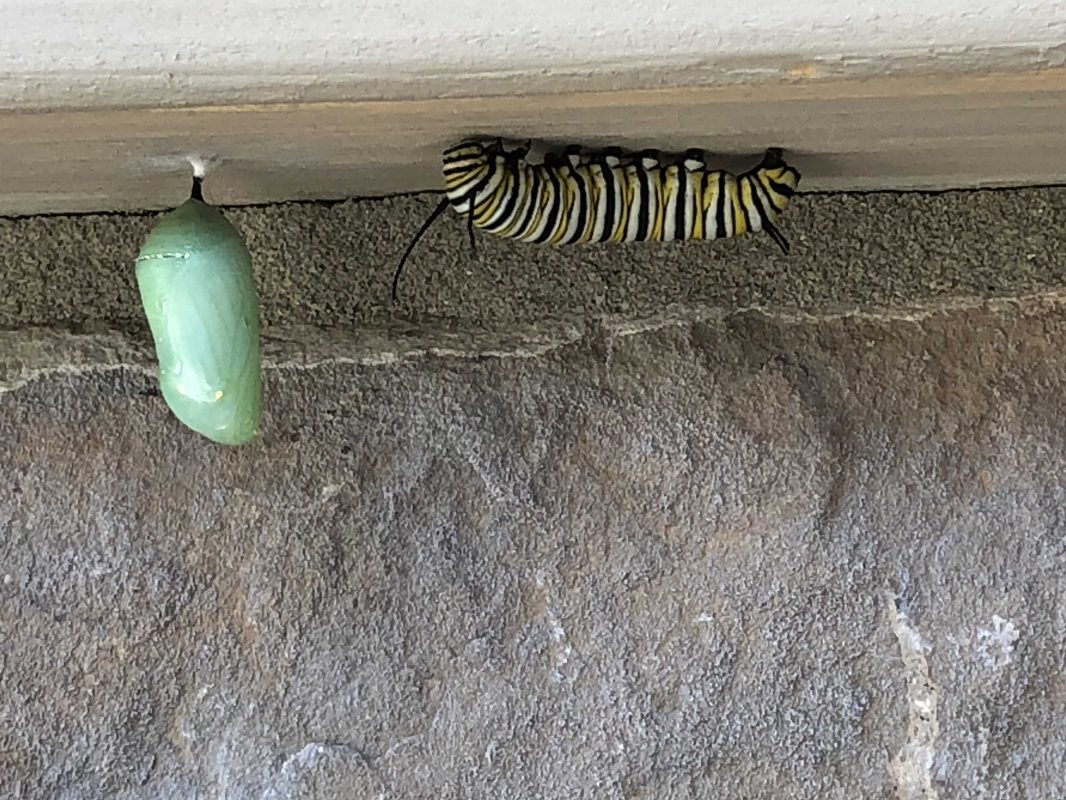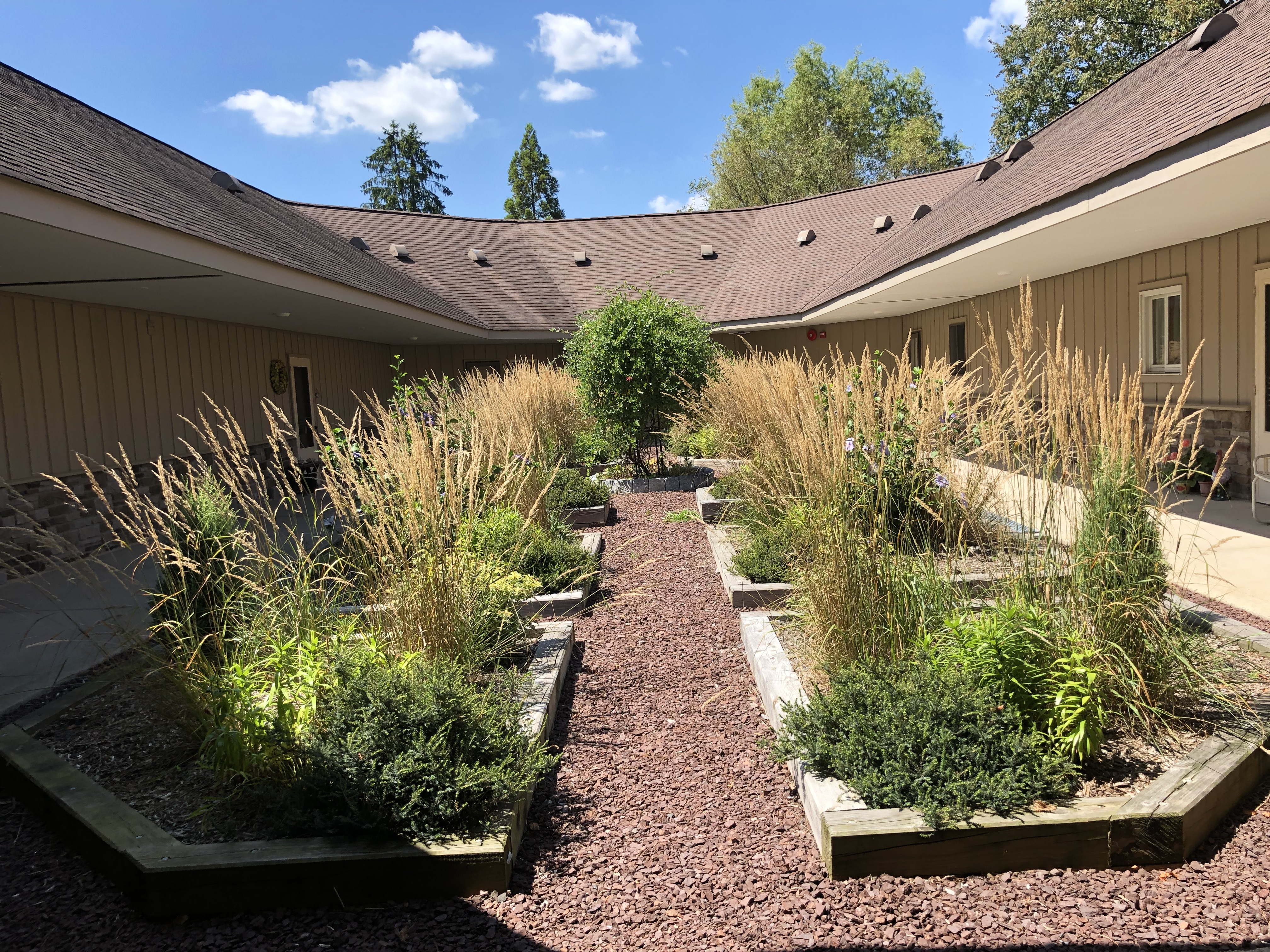Visit Court 28 on the Medford Campus to see a living laboratory of Monarch butterflies as they emerge from their chrysalises. This court is home to a number of native milkweed plants which attract the Monarch butterflies. As the eggs on the milkweed plants hatch, they form caterpillars, who have a very busy time eating the milkweed and growing very quickly. The caterpillars then form their chrysalises, which protect them. Shortly before emerging, the chrysalises will appear transparent and sometimes you can clearly see the distinctive patterns of the Monarch wings. The butterflies then emerge and in a short period of time achieve full size. You can easily find the caterpillars and chrysalises along the wood trim above the stonework in the Court.
Monarch butterflies are not able to survive the cold winters of most of the United States so they migrate south and west each autumn to escape the cold weather. The monarch migration usually starts in about October of each year, but can fluctuate dependent upon the climate. They reach a small area of Mexico where they winter in large numbers before migrating north in spring. The Monarch butterfly has become a symbol of conservation; it is an important pollinator as well as a food source, and its wonderful migration is vulnerable to environmental disruption at many points along its route.




